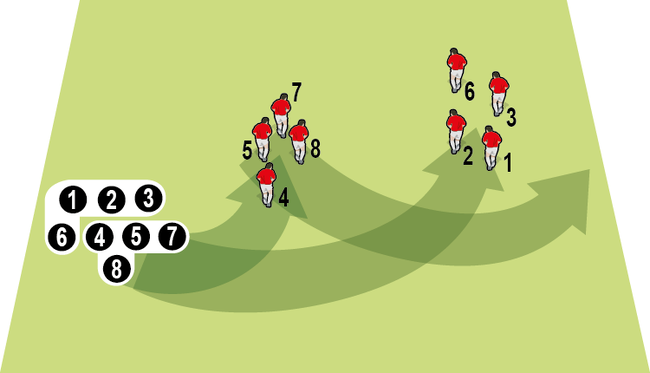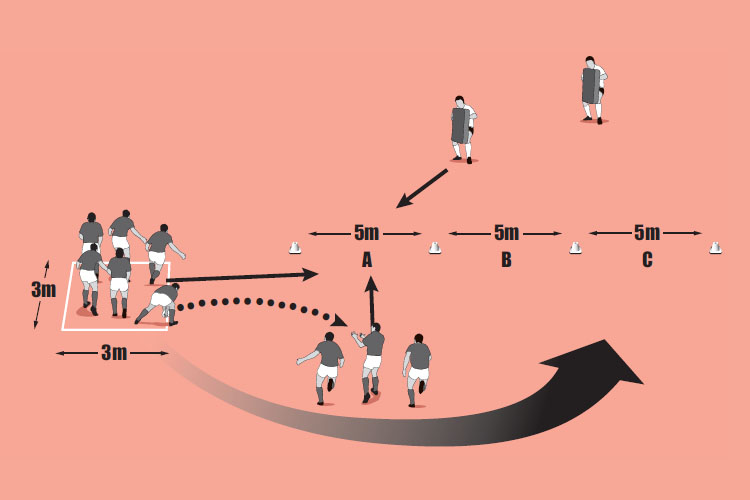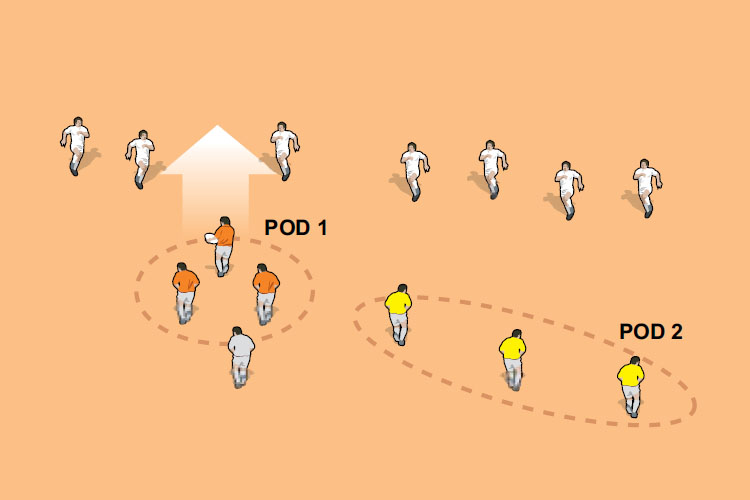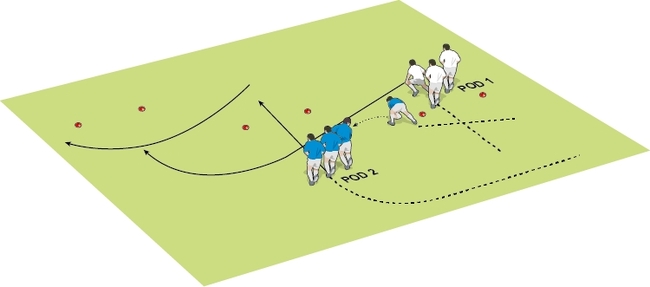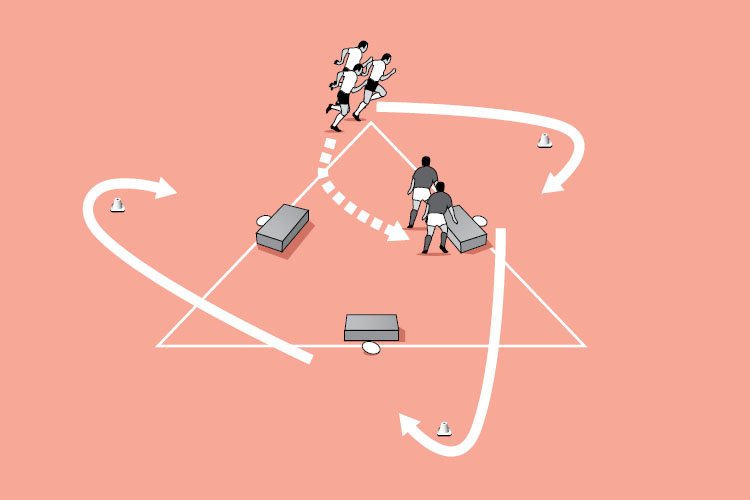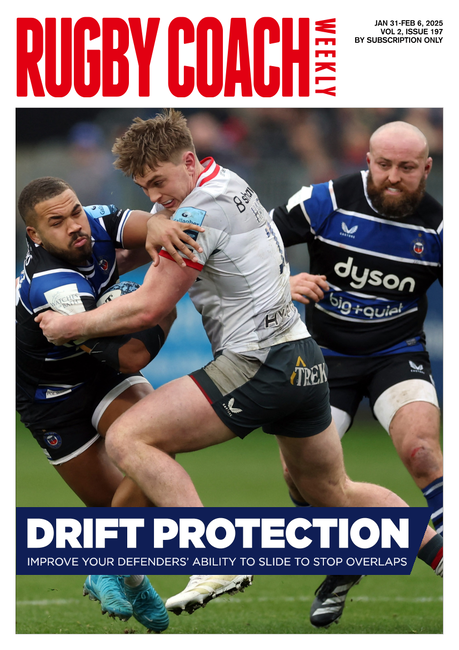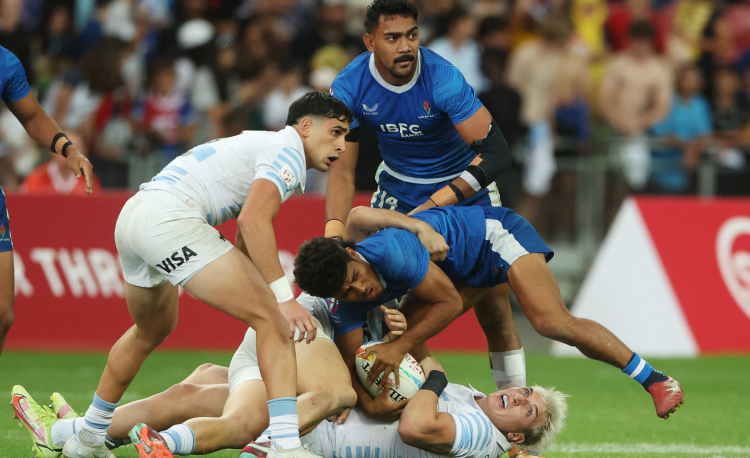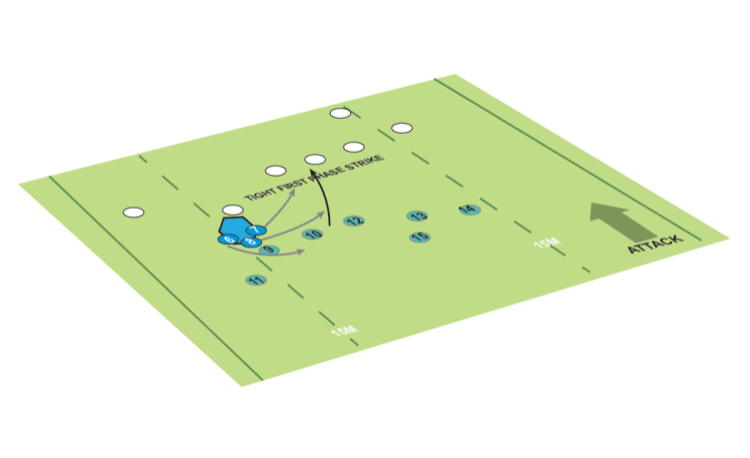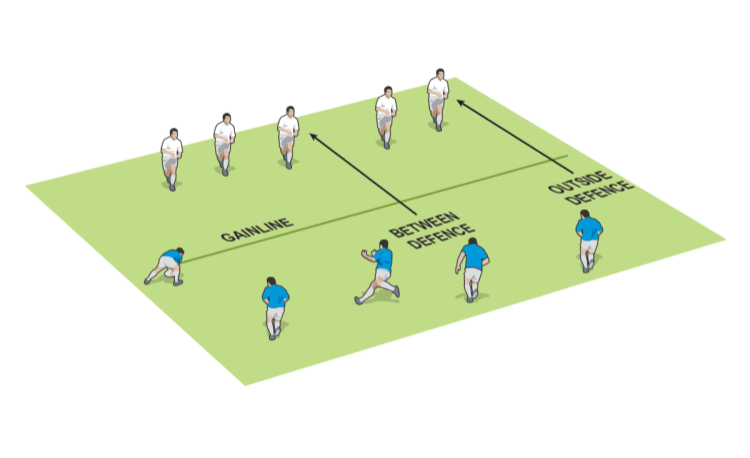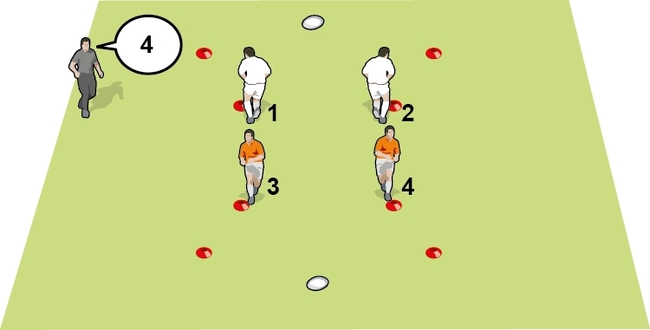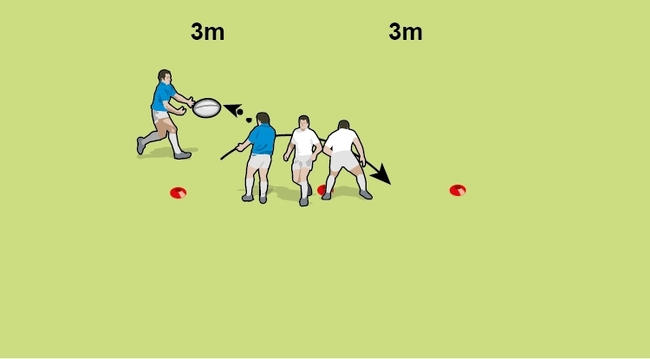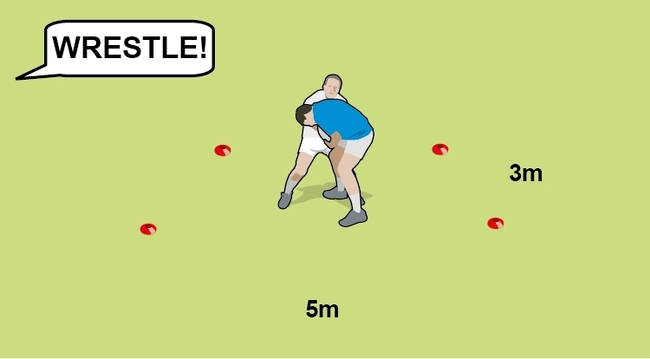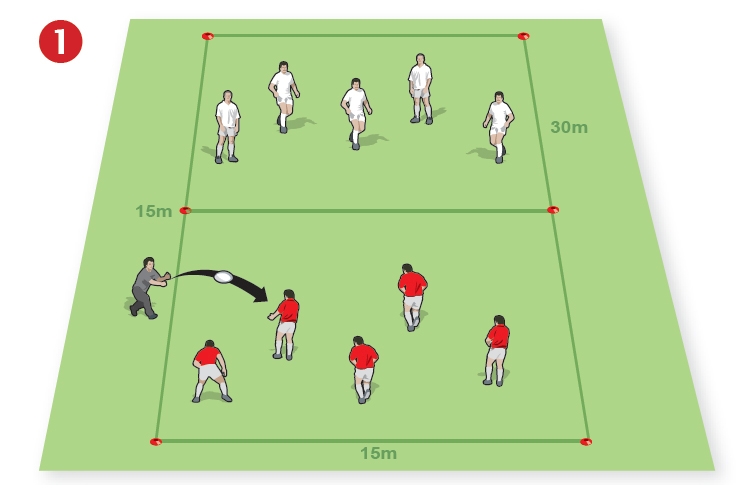Essentials for using attacking pods
Organise your pack into small groups to provide more support in later phases.
Pod systems are a powerful tactic to maximise the impact of forward support.
The idea is to not overload breakdown areas and to provide more support in the subsequent phase.
You can organise the forwards into small groups, known as ’pods’, which operate independently of each other to recycle the ball. As one pod provides continuity, the other is already moving into position.
The main advantage of a pod system is that it improves continuity at the third and fourth phases of a passage of play.
Without this organisation, it is possible that too many forwards commit themselves to the first tackle and ruck, leaving too few resources for the next phase of play.
It also helps forwards know where to run from the next breakdown. It might be that one pod will need to follow around into the next ruck, or the ball might be switched back the other way, so they can stay in position.
TYPICAL POD SYSTEM FROM A SCRUM
The scrum is split into two pods. The first pod works to the first breakdown, the second pod wraps around to the second breakdown (see illustration).
From a scrum on the left, players 4, 5, 7 and 8 make up pod 1. These are the four players most able to provide support to the first attack. Their role is to recycle the ball at the initial breakdown.
Pod 2 consists of the other four forwards. They will have the furthest to travel from the scrum. They concentrate on getting into position for a subsequent breakdown following pod 1’s success.
As each pod recycles the ball, it then moves to a position to follow on from the other pod’s work. You can vary the pod membership, depending on your mix of players.
BENEFITS
Some of the benefits of a pod system include:
- The forwards knowing in advance what is required and can react quicker.
- The forwards should be involved in fewer breakdowns and will be less tired.
- The backs will not have to recycle the ball, providing better options for attack.
The success of a pod system relies on several key factors. A failure of any one of these factors can lead to the system breaking down, either by losing the support needed or by forcing some players to work in the two pods and becoming tired as a result.
Pod membership from a lineout may differ from that of a scrummage, depending on the players available after the ball is won, especially if it is caught and driven first.
"As one pod provides continuity, the other pod is already moving into position..."
KEY ELEMENTS TO A GOOD SYSTEM
The players must all be fit enough to fulfil their pod duties. Players who are unable to make the next breakdown weaken their pod and impact on the other pod’s players.
The players still need to be able to make good decisions, like whether to join a breakdown or help out the other pod in times of danger.
Contact skills must be excellent. The reduced numbers in each pod mean that each pod member must be able to make a significant contribution to any breakdown.
Even if the requirements are not fully met, a pod system can still be used in a limited way while players improve skills and fitness.
Playing an attack pattern where the pods are used only once each, following a scrum or lineout, still provides the benefits in early phases and helps players adapt to the system.
As players become more adept with the pod system, it may even be possible to introduce a third pod, with just three players per pod and with a back, such as the blindside winger, involved in the third pod.
Related Files
Newsletter Sign Up
Coaches Testimonials

Gerald Kearney, Downtown Las Vegas Soccer Club

Paul Butler, Florida, USA

Rick Shields, Springboro, USA

Tony Green, Pierrefonds Titans, Quebec, Canada
Subscribe Today
Be a more effective, more successful rugby coach
In a recent survey 89% of subscribers said Rugby Coach Weekly makes them more confident, 91% said Rugby Coach Weekly makes them a more effective coach and 93% said Rugby Coach Weekly makes them more inspired.
Get Weekly Inspiration
All the latest techniques and approaches
Rugby Coach Weekly offers proven and easy to use rugby drills, coaching sessions, practice plans, small-sided games, warm-ups, training tips and advice.
We've been at the cutting edge of rugby coaching since we launched in 2005, creating resources for the grassroots youth coach, following best practice from around the world and insights from the professional game.
